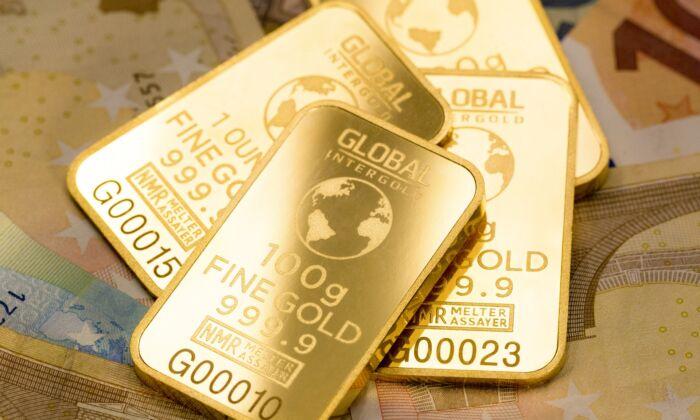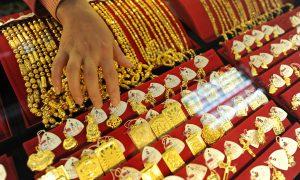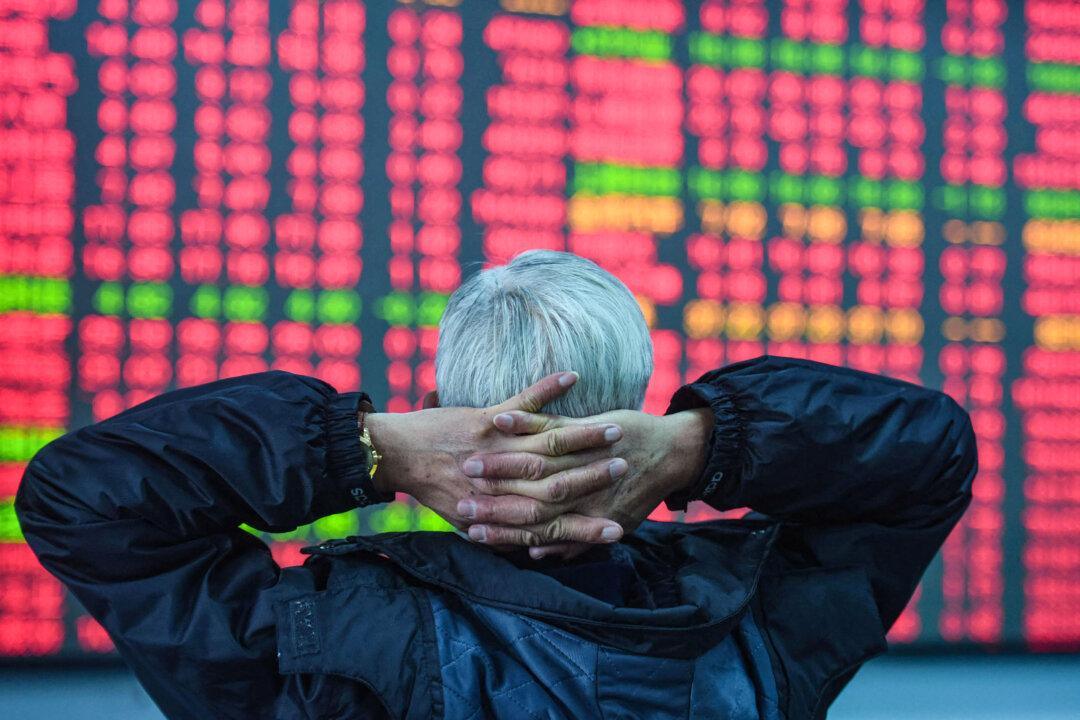Along with the surging international gold market, the price of gold in China has soared recently, continuously breaking historical records. However, market insiders believe the main driving force of the “gold rush” is China’s central banks’ increase in gold holdings.
Over the past month, the price of gold has continued to rise. On the morning of April 8, the price of 24-karat golden jewelry soared from 712 yuan per gram ($98.4) to 728 yuan ($100.6) within an hour, an increase of about 2.2 percent.
In the A-share market in China, gold concept stocks have experienced strong upward momentum since April 8, with at least four stocks hitting their daily upper limit.
On April 7, China’s State Administration of Foreign Exchange released data stating that since November 2022, China’s central bank has been increasing its gold reserves for 17 consecutive months. As of the end of March 2024, gold reserves had reached 72.74 million ounces, an increase of 160,000 ounces compared to the previous month.
Hoarding Gold
Since the People’s Bank of China began increasing its gold reserves, the “gold rush” in the Chinese market has heated up. In 2024, not only golden jewelry but also gold bullion suitable for investment have become extremely popular.Major banks such as ICBC and Bank of China, as well as institutions like China Gold and Shanghai Gold Exchange, have all been selling their own gold bullion, with prices showing a continuous upward trend.
Key Drivers of Gold Price Surge
The main reason behind the surge in gold prices in China and on the international market is the large-scale increase in gold holdings by central banks around the world, which has led to a steady rise in international gold prices.Mr. Rosenberg also attributed the recent rise in gold prices to global geopolitical risks and unpredictable macroeconomic outlooks. According to the Chinese business media Caixin, the consensus among industry insiders in China is generally consistent with that of Mr. Rosenberg’s team.
Dong Qi, a market researcher at China’s Guotai Junan Securities, believes that China’s central bank and Gold ETFs (gold exchange-traded funds) are the driving forces behind this round of market trends. From November 2022 to February 2024, the Chinese central bank’s gold purchases accounted for 60 percent of global central bank net purchases. Meanwhile, Chinese gold ETFs have experienced continuous net inflows, while those in other countries have seen net outflows during the same period.
Various Risks in China’s Gold Market
Amid the surge in gold prices, buying gold poses various risks in China. Several state-owned and privately-owned gold retailers in Beijing, such as China Gold, abruptly closed their retail stores, leading to the inability to redeem gold stored in the shops.Some online stores selling gold beans have also abruptly shut down, causing issues with after-sales service and claims.
Some consumers in China reported purchasing gold products with insufficient purity or weight or even fake gold bullion.
Fake gold bullions are made of gold-plated tungsten and cannot be distinguished by their density since the density of gold and tungsten is quite similar. Even X-ray fluorescence cannot detect the difference unless the bullion is drilled or cut open.
Due to rampant corruption in China, some consumers are concerned that even buying gold through legitimate channels like banks does not guarantee 100 percent authenticity.
Recently, Shenzhen took the lead in requiring buyers to register with their legal name to purchase gold products exceeding 20,000 yuan ($2,800). This model may be implemented nationwide in China in the future.
Qin Peng, a Chinese political and economic analyst based in the United States, told The Epoch Times on April 11 that the risk of China’s physical gold being plundered is also increasing.
“The Chinese authorities’ requirement for quotas and legal name registration raises concerns that, like many years ago, when China was sanctioned for military provocations against Taiwan, there may be forced sales of gold at low prices,” he said.
Mr. Qin also believes that gold has long been detached from currency and no longer has the inherent value for preservation and appreciation. This wave of skyrocketing gold prices can only be attributed to speculative trading. With gold prices continuously breaking historical records, many Wall Street professionals also believe that there is a large speculative component. The rising trend may continue, but the magnitude is limited, similar to buying stocks at high points, which increases the risk of price corrections and losses.






